Search Results
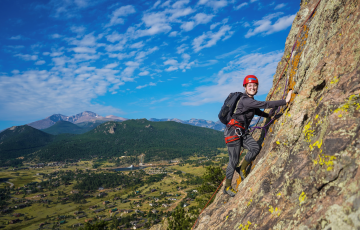
Mara
I was in my second to last year of nursing school and just over one year into my marriage when the headaches became too much to bear. I was 21. I was tired all of the time, but I was working in a busy ER and going to class when I wasn't at work. I had lost some weight, but I had been exercising more and getting a lot while working in the ER. I had a cough, but they tell you that you'll be sick a lot when you're in nursing school. Unfortunately, I happened to touch my neck one day while studying with classmates for a big exam. There was a lump there that I had never felt before.
Work, School & Finances
Work and SchoolSome people continue to work or attend school through cancer treatment, but others are not able to do so. Talk to your healthcare team to know what to expect from treatment so you can make the decision that is best for you.
Hospice
Hospice embodies a philosophy that delivers compassionate care to people, including children, who are approaching the end of their lives and provides emotional and physical support to them and their loved ones. Hospice offers medical care that focuses on maintaining and improving quality of life for someone whose disease or condition is unlikely to be cured. An interdisciplinary hospice team provides medical care, pain control and emotional and spiritual support that is tailored to the individual needs of each patient and his or her family.
Treatment Outcomes
The cure rates and survival outcomes for patients with ALL have improved over the past few decades. Today, nearly 90 percent of adults diagnosed with ALL achieve a complete remission, which means that leukemia cells can no longer be seen in the bone marrow with a microscope. Still, despite high remission rates, relapses still commonly occur in adults and survival rates for adult patients remain at approximately 20 to 40 percent. However, these rates can vary significantly, depending on the patient’s ALL subtype and other prognostic factors.
Splenectomy
A splenectomy is the procedure done to remove the spleen. Before effective drugs became available for hairy cell leukemia, splenectomy was the first-line treatment for the disease.
Making Treatment Decisions
Adults living with blood cancer must make decisions about treatment, family, work or school and finances. If your child has been diagnosed, you must make similar decisions for your son or daughter.
Gathering Information and SupportYou'll need to choose:
Chemotherapy and Drug Therapy
Chemotherapy is generally used only in patients with blast-phase CML as a way to get the CML back into chronic phase. Very high-dose chemotherapy is used to prepares patients for an allogeneic stem cell transplantation.

James
I was diagnosed with stage 3 follicular lymphoma (FL), a type of non-Hodgkin lymphoma (NHL), at the end of 2017, and our world was turned upside down. I lived a pretty healthy lifestyle, stayed active, and ate well. I never thought I would be diagnosed with cancer until I received the phone call from my hematologist/oncologist late on a Friday night. My body went numb as I listened to the diagnosis and the aggressive treatment plan around the corner.

Ariana
My daughter Ariana is a cancer survivor of stage 3 Hodgkin lymphoma (HL). When she was 13, she was diagnosed. After all the hospital and doctor visits, they finally found the tumors inside her body.

Bethany
I was 28, married for two years, and my husband and I had just celebrated our one year anniversary at my business, Gigi’s Cupcakes. But on March 30, 2012, that all changed.
Christa
I was diagnosed with acute lymphoblastic leukemia (ALL) at three years old. I experienced two and a half years of chemotherapy, lumbar punctures, blood transfusions, hair loss, and surgery. Since then, I have not wasted a single day. I live each day to the fullest, remembering a time when my future was unsure. I want to make the most of my second chance by striving to achieve what may seem like a challenge. My goal is to become a psychologist and specialize in the behavioral and cognitive development of children. I want to continue to be a part of The Leukemia & Lymphoma Society (LLS).
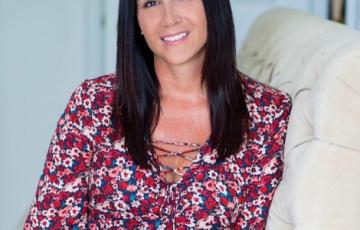
Lauren
"I am a chronic leukemia-fighting mother of 4 boys and wife. In 2009, I was diagnosed with Essential thrombocythemia (ET). The diagnosis came after having multiple cerebellar strokes caused by a certebral artery dissection and a platelet count of 1.5 million, which is more than 3 times the normal limit. I immediately was told that I would start oral chemo called Hydrea which I would remain on indefinitely or until a cure was found.
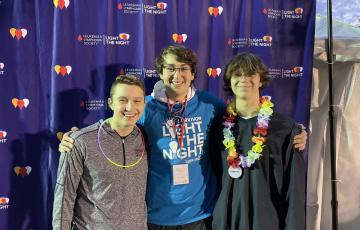
Ethan
When I was just under two years old, I was diagnosed with acute lymphoblastic leukemia (ALL). My brother was born just a few days later, and it became an extremely difficult time for my family. Because I was so young, I do not remember most of my treatments that lasted until I was almost five years old. The closest place for treatment was Children’s Mercy Hospital in Kansas City, Missouri, which was a three-hour drive away. Weekend trips to KC became normal, which meant lots of gas money and fast food.
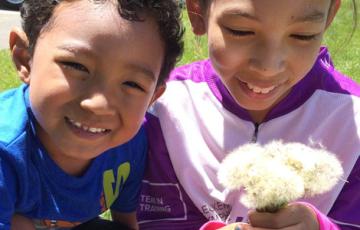
Brian
Brian Shaw (a.k.a. “Little Man”) is an energetic, happy, intelligent and compassionate six-year-old boy. For nearly a year, starting when he was four, several of those characteristics seemed submerged beneath the side effects of daily chemotherapy that followed his diagnosis with acute lymphoblastic leukemia. Though his treatments continue (3-1/2 years in total), the side effects have alleviated somewhat and Brian is getting back to his normal self, attending school, etc.
Doug
Four years ago, 53-year-old Doug was getting ready to walk in his son's wedding, but he had been recently diagnosed with gastric lymphoma and was worried about his future.
While undergoing chemotherapy, Doug ate a lot of unhealthy foods and gained a lot of weight. While in treatment, he decided he needed to take control of his health and began to make some healthy lifestyle changes not only to fight cancer, but tackle his obesity and smoking habit as well.

Sabrina
May of 2017, I was diagnosed with Hodgkin’s lymphoma following my 19th birthday. The news of cancer shook my reality as I’d just began establishing my life. I was forced to give up my independence and lean on my community.
After six months of treatment I showed no evidence of disease. On a follow-up post treatment there was spots present of growth and I had a few more rounds of chemo added. Almost a year had gone without signs of cancer, but symptoms were appearing.

Austin
In May 2011, when Kimberly Schuetz was starting to plan her son Austin’s third birthday, he was diagnosed with a high-risk form of acute lymphoblastic leukemia.
Austin was immediately placed on a chemotherapy regimen. However, when a routine blood test revealed that he relapsed in October 2012, their only option was a bone marrow transplant to save his life. After that transplant, his cancer came back for the third time in May 2013.

Madison
In October 2016, at the age of 21, I was diagnosed with primary mediastinal large B-cell non-Hodgkins lymphoma. After a few weeks of chest pains, finding a lump on my chest which led to many tests, I was admitted to Cincinnati Children's Hospital where I received treatment.

Phil
Phil is known for having the time of his life making music or dancing, so when he was diagnosed with Waldenström macroglobulinemia four years ago, after a routine physical revealed he had a high protein count, he knew that he had to not worry and keep dancing. It's worked so far, after one treatment with Rituxan, and aside from feeling fatigued he's been well for more than three years.
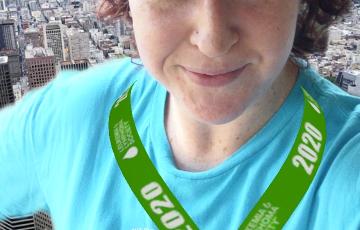
Leigh
In August 2019, I developed pneumonia for the third time in two years. I had been finding that my ability to fight off illness was not as good as it used to be. Once it got to the point that I was having problems breathing, I decided to go to urgent care. Two years prior, I had been hospitalized for pneumonia, and I wasn’t looking forward to it happening again. I Googled the nearest urgent care, and it was closed. There was only one nearby that was open, but I had never been before.

Allison
During the start of the pandemic, my boyfriend began working out from home with all the gyms being closed. While working out, he discovered a lump under his arm. We both waved it off as nothing to worry about, but he still asked his doctor about it just in case. His doctor wanted him to get it biopsied. I dropped him off for surgery, still naive that anything would actually be wrong. He wasn't showing symptoms, he was active and healthy, plus he was young. “We” were young. We were in love, talking about getting engaged, and just moved in together. What could go wrong?
Elissa
Ten years ago, my mother-in-law was diagnosed with stage 4 non-Hodgkin lymphoma (NHL). She has since been deemed cured and has had no recurrence since her successful treatment. Some of her medicines were funded by The Leukemia & Lymphoma Society (LLS). We spent years racing for Team In Training (TNT) to fundraise for LLS.

Kennedy
When I was 17, I was diagnosed with stage 2 Hodgkin lymphoma (HL).
In January 2022, my dad sat me down and told me he had cancer, penile cancer, and he told me he would have to have multiple surgeries to get it removed. The next week my dad sat me down, yet again, and told me my grandfather, his dad, had cancer, prostate cancer. I felt completely overwhelmed at this time. Cancer had never been a thing I had to worry about or something I really knew much about.
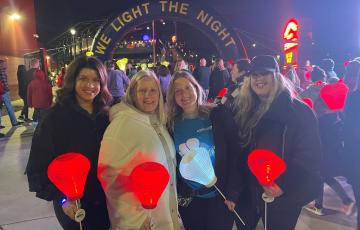
Allison
Spring Break of my second year of medical school marked the beginning of an unexpected chapter in my life. What I had initially brushed off as the flu led me to the emergency room, only to discover that I had acute promyelocytic leukemia (APL). At 24, the trajectory of my life drastically shifted, steering me away from my aspirations of orthopedic surgery towards a path I could have never foreseen.
